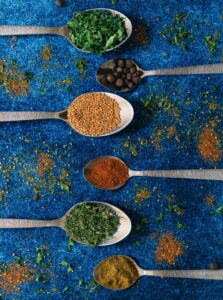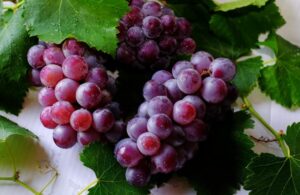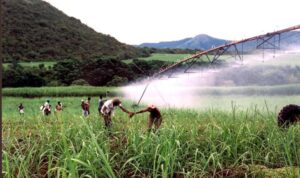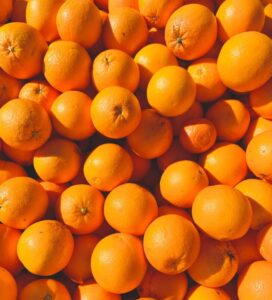Introduction
- Olive products are olive oil and table olives.
- Harvesting can be done mechanically or by hand. The latter yields a better product but is more labour intensive. Olive farming is a long-term investment, with a return on investment only showing four to five years after planting.
- The climate in the Western Cape is ideal for growing olives, especially around towns like Paarl, Robertson and Montagu, and 95% of the country’s olive production happens in the Western Cape (SA Olive, 2022). Olives can also be produced in certain summer rainfall areas as happens in Hartswater in the Northern Cape, and even in the Eastern Free State (refer to Serrado Olive Estate under the “Companies involved” sub-heading)!
- The majority of South African olive farms are small: almost half of the 200 registered olive growers are farms of less than 5 ha.
- Over the past 10 years, the land under olive cultivation has doubled in size from 1800 hectares to nearly 3700.
- In terms of table olives, around 1400 tonnes of olives are produced, and about the same volumes are imported each year.
- In 2020, an estimated 2 400 hectares were dedicated to olive oil in South Africa, representing a 70% increase since 2012. Similarly, dual table and oil hectares have grown by 52% in South Africa over the same period.
- Around 1.5-2.0 million litres of local olive oil are produced each year, and a further 5-6 million litres of olive oil are estimated to be imported annually. While local production is entirely Extra Virgin, the same cannot be said for imported olive oils. Imported olive oil is subsidised and cheaper, one of the impediments to creating further employment in this sector. Another challenge is that olive products are regarded as luxury items (Mathe, 2020).
- One answer to the flood of imports, often of inferior quality, is the Commitment to Compliance (CTC) Scheme, which ensures that consumers can choose “the best quality locally produced oils”.
- Olives have high growth potential and create jobs, and can accordingly be viewed as an important crop for South Africa.
Source: www.saolive.co.za/wp-content/uploads/2022/02/SA-Olive-Factsheet.pdf and previous notes which appeared in earlier editions of the Agri Handbook.
International business environment
- World consumption of olive oil is between 3,1 and 3,2 million tons per year.
- Olive oil production is expected to reach 3.20 million tons in the 2023/24 crop year, a recovery from the previous year’s “historically poor harvest” and just topping a five-year average of 3.14 million tons (USDA, 2023).
- The largest producers in the world are Spain, Italy, Greece, Turkey and Morocco (SA Olive, 2022).
Find information at:
- International Olive Council – www.internationaloliveoil.org
- Olive Oil Times, www.oliveoiltimes.com
- News on olives “from all around the world”, www.olives101.com
South Africa: imports and exports
- There is still room in production for import substitution.
- South Africa produces about 1.5 to 2.0 million litres of olive oil, most of which is extra virgin olive oil. Imports are Between five to six million litres of olive oil.
In 2022 South Africa imported olive oil from Spain (62.6%), Italy (31.6%), Greece (2.6%) and Portugal (2.6%), among others.
South Africa’s olive oil exports went to Namibia (22.8%), Zambia (15.8%), Botswana (13,2%) Eswatini (7.3%), Sri Lanka (6.8%), Mozambique (6.6%) and Malawi (6.2%), among others.
Source: www.iol.co.za/business-report/economy/sa-olive-oil-industry-has-strong-prospects-says-land-bank-analyst-66b12462-f7c7-4b27-ac0a-ae4321fe1c07
For the newcomer
Find grower notes on the websites of several role players e.g. www.saolive.co.za and www.drakensteinolives.co.za.
Role players
Further reference:
- Find information on the Commitment to Compliance (CTC) seal on the SA Olive Industry Association (SA Olive) website. A levy on all table olives and olive oil is paid by producers, processors and importers.
- Statutory levies for the olive and other agricultural sectors are processed by the National Agricultural Marketing Council (NAMC).
- A list of registered olive nurseries can be found at www.saolive.co.za/registered-nurseries/
Websites and publications
- Visit the websites of companies listed earlier on this page. Several of them include general information about olives, including the health aspects.
- www.saolive.co.za is a vital stop for information about olives and the South African olive industry. Amongst the information are notes for growing olives and standards for nurseries. There is also information about available publications and DVDs. These include (i) Olive Production in South Africa, (ii) Olive Oil: A Field Guide, (iii) Olive Growing Manual, and (iv) Extra Virginity: The Sublime and Scandalous World of Olive Oil.
- Available from ARC-Agricultural Engineering (ARC-AE) is the publication “Agro-processing of Olives and Legumes (green peas, green beans, cowpeas, lentils, olives, peanuts, mushrooms)”. Call 012 842 4017 or visit www.arc.agric.za.
- Table Olive Processing Made Easy by Linda Costa. Find details at www.facebook.com/OlivesInFact.
- Mueller T. 2013. Extra Virginity: The Sublime and Scandalous World of Olive Oil. New Delhi: Atlantic.
- Costa, C. 1998. Olive Production in South Africa: A Handbook for Olive Growers. Nelspruit: ARC-Tropical and Subtropical Crops.
- Find news and information at http://olive-central.co.za.
- Find the history of olives and notes on the South African olive sector at www.rosannaolives.co.za.
- The AgriSETA Assessment Guide Primary Agriculture “Monitor the establishment of a crop” includes orchard trees. Another relevant learner guides include “Harvesting agricultural crops”.
- Find the olive tree information at https://wikifarmer.com/olive-tree-information/.
Some articles
- Read about a a visit to Klein Namaquafontein. Olive oil is one of the products. The blog is here.
- Tembo P. 2024, November 2. “Rising demand fuels SA olive oil industry”. Food for Mzansi. Available at www.foodformzansi.co.za/rising-demand-fuels-sa-olive-oil-industry
- Reporter. 2024, October 17. “2024 Absa Top 10 olive oil winners revealed”. Bizcommunity. Available at www.bizcommunity.com/article/2024-absa-top-10-olive-oil-winners-revealed-363758a
- Skweyiya S & Anders T. 2024, October 4. “Black South African olive oil producer calls for more state support”. Bizcommunity. Available at www.bizcommunity.com/article/black-south-african-olive-oil-producer-calls-for-more-state-support-252807a
- Reporter. 2024, September 11. “2024 SA Olive Awards winners announced”. Bizcommunity. Available at www.bizcommunity.com/article/2024-sa-olive-award-winners-announced-479829a
- Biacuana G. 2024, April 22. “SA olive oil industry has strong prospects, says Land Bank analyst”. IOL. Available at www.iol.co.za/business-report/economy/sa-olive-oil-industry-has-strong-prospects-says-land-bank-analyst-66b12462-f7c7-4b27-ac0a-ae4321fe1c07
- Kazmer R. 2024, March 15. “Ford uses olive trees to build car parts in latest project: ‘A material that shows no compromise in strength, durability, or flexibility'”. Tech. Available at www.yahoo.com/tech/ford-uses-olive-trees-build-160000795.html
- Du Toit M. 2023, July 11. “A growing market for SA’s world-class olive industry”. Farmer’s Weekly. Available at www.farmersweekly.co.za/crops/fruit-and-nuts/a-growing-market-for-sas-world-class-olive-industry/
- Dawson D. 2023, May 17. “Global Olive Oil Production Predicted to Rebound”. Olive Oil Times. Available at www.oliveoiltimes.com/world/global-olive-oil-production-predicted-to-rebound/119906






